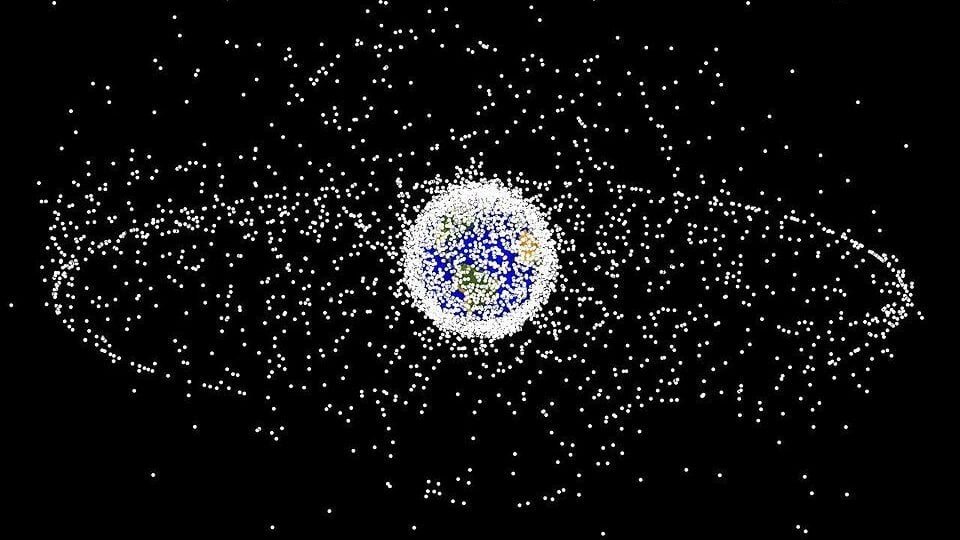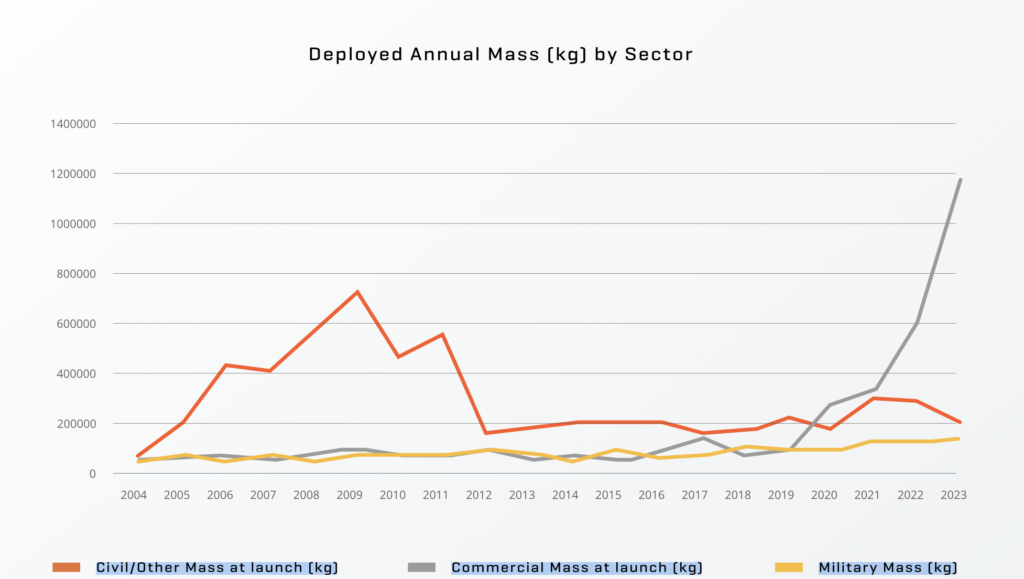
The orbital population of active and inactive satellites hit a new peak in 2023, according to a new report from Slingshot Aerospace. (NASA)
WASHINGTON — A new report finds that 2023 was yet another boom year for space operations with more launches, more satellites deployed, more dead satellites littering the heavens, more satellite maneuvers — and with that increase in on-orbit activity a growth in risks to operators, in part evidenced by “markedly increasing” insurance rates for operators.
“The State of Satellite Deployments and Orbital Operations” is the first of what space monitoring firm Slingshot Aerospace intends as an annual report looking at the domain through “the lens of the satellite lifecycle” from launch to deployment to on–orbit operations to end-of-life disposal.
That soup-to-nuts overview is what makes the new report special, Melissa Quinn, managing director of the company’s UK arm Slingshot Aerospace Ltd. based in Cornwall, told Breaking Defense on Monday.
“I think showing that kind of … whole ecosystem of satellites is kind of a cool story,” she said. “And it’s different than what else I’ve seen out there. There’s a lot of kind of launch reports and market reports. Some of the nuggets that we found in here … I’ve never seen before in the kind of wider industry [reporting].”
Quinn said the biggest takeaway from the report’s finding, in her mind, is simply the number of firsts in 2023 across almost every factor the company looked at.
“I’ve been in this industry for a while now. I think it’s a combination of all the ‘first-evers’ or the ‘most-evers.’ I think that’s what took me aback when I saw the the kind of findings for everything, where it was like: the most ever launches; the most ever spacecraft; highest ever insurance” she said.

The Slingshot report shows a total of 2,877 satellites deployed in 2023, most of which are owned by SpaceX as part of its Starlink constellation.
Among the key indicators reviewed for 2023 were the number of launches, number of satellites actually deployed, number of active spacecraft, and the number of dead spacecraft still floating around — numbers that across the board hit record peaks. According to the report, in 2023:
- There were 223 launches, up 19.9 percent from 2022.
- Deployed spacecraft totaled 2,877, up 14.6 percent from 2022. Unsurprisingly, most of these were stationed in low Earth orbit (LEO), with the overwhelming majority belonging to SpaceX’s Starlink communications network.
- Active spacecraft totaled 9,241; versus the 6,718 active at the end of 2022 according to the Union of Concerned Scientists’ Satellite Database.
- Dead spacecraft numbered 3,356; versus 3,266 in 2022.
One of the more interesting tidbits in the findings, according to Quinn, is the fact that the growing congestion isn’t just in LEO — where constellations with hundreds of satellites are becoming the norm, even for the US Space Force as it seeks to make it harder for adversaries to cut access critical space-based capabilities — but also in geosynchronous Earth orbit (GEO).
“I think one of the other data points that I thought was quite interesting around this is what’s going on out in geostationary orbit, because the distance between satellites out there is is going down. So they’re suddenly becoming more congested, and that’s where a lot of the really kind of critical comms satellites are,” she said.
The report found that the average distance between satellites in GEO went from 450 kilometers in 2010 to 300 kilometers in 2023, a 33 percent decrease.
That overall congestion, Quinn said, is a key factor in the growing turmoil in the space insurance market. (Slingshot in 2022 acquired British space data analytics company Seradata that has a long pedigree in monitoring the space insurance market.) Another factor, she said, is the perception of an “increasing threat” from “adversaries.” As an example, she cited the “really strange behavior in GEO” Slingshot tracked last year by Russia’s Luch/Olymp satellite as it stalked Western satellites across the belt.
The Slingshot report found that insurance premium rates being charged to satellite operators are on the uptick.
“Premium rates are markedly increasing, especially for the ‘plus one year’ part of standard launch insurance. Anomalies in the early part of life account for most of the major losses. For example, a typical GEO satellite aboard a Falcon 9 might have commanded a rate of under 6% at the beginning of the year. Now it is approaching 10%. Annual in orbit insurance was similarly affected with a near doubling of rates from circa 0.6% to close to 1.2%.,” the report elaborated.
There further were record-breaking levels of insurance claims by space operators in 2023, the report found. Space insurers lost almost $995 million — outweighing total gross premium income of around $557 million. The bulk of the payouts were to Viasat for the loss of its ViaSat-3 Americas broadband bird, the report explained, which resulted from an anomaly unrelated to congestion issues.
“Notable insurance claims underscore the financial risks associated with satellite operations, prompting adjustments in underwriting practices,” the report said.
Commerce extends commercial data contracts for space tracking system pilot
All five contractors — COMSPOC, Kayhan Space, LeoLabs, Slingshot Aerospace, and SpaceNav — received new orders, bringing total “spending over the course of the Consolidated Pathfinder to $15.5 million,” according to an announcement by the Office of Space Commerce.



























